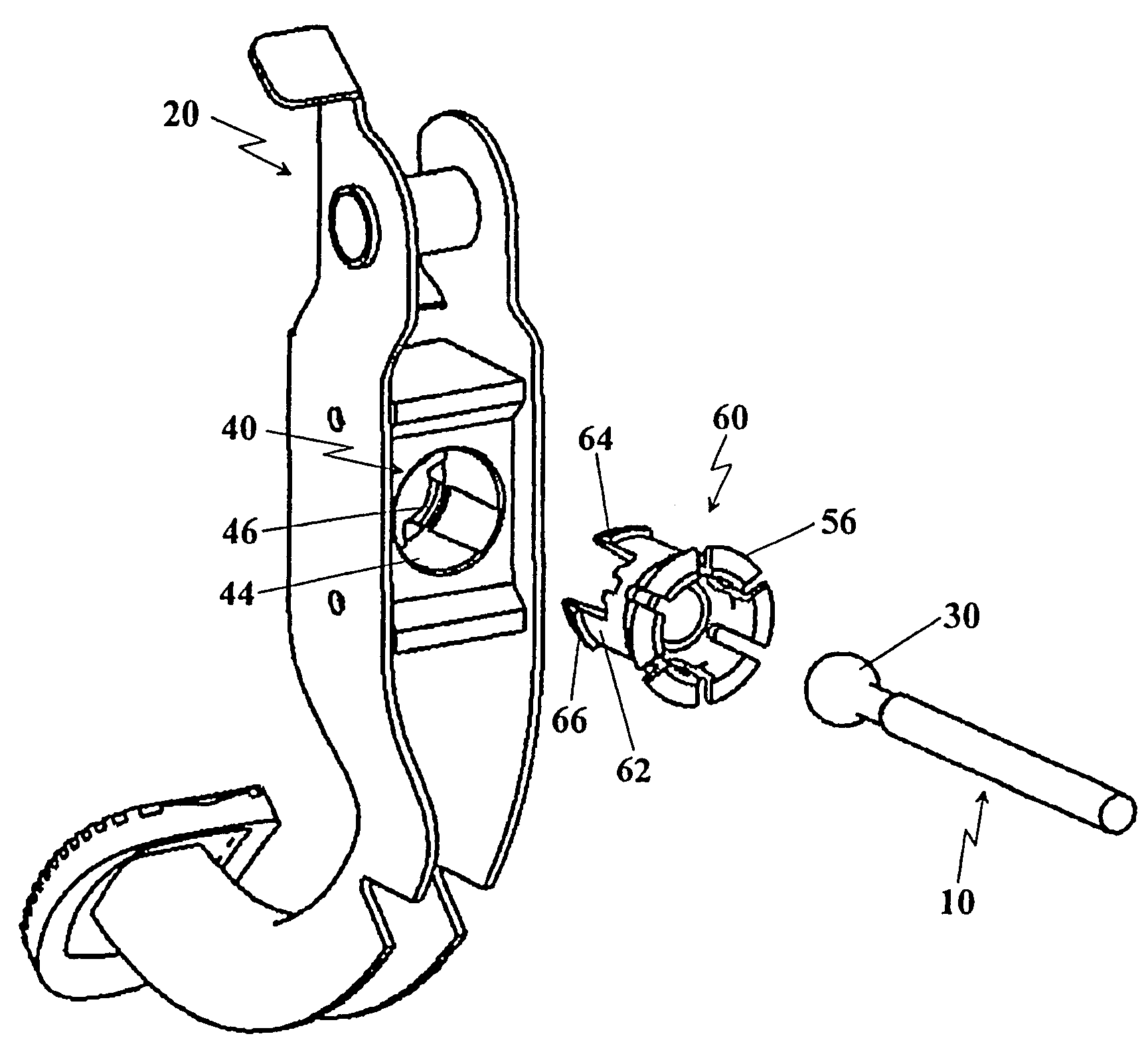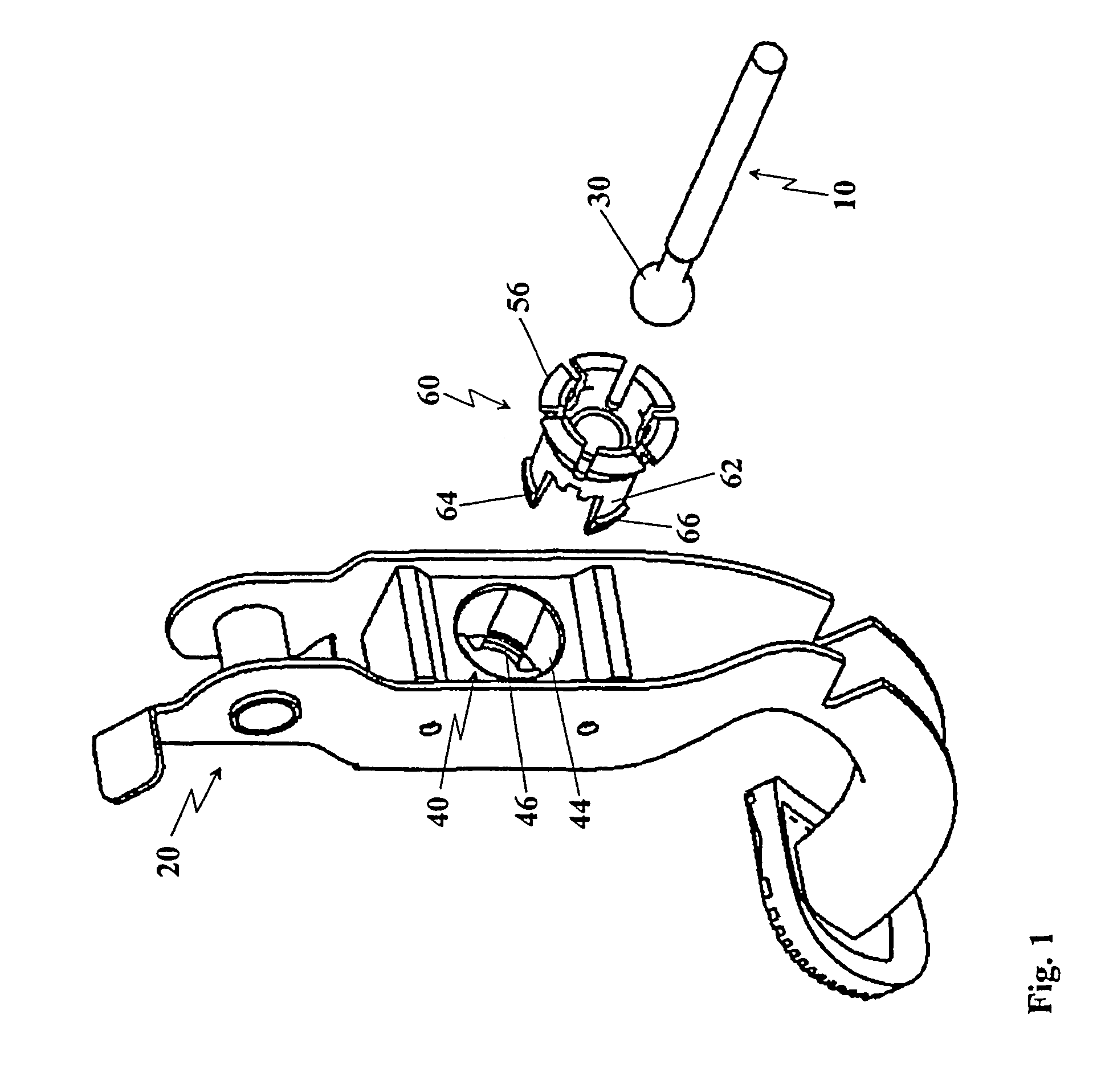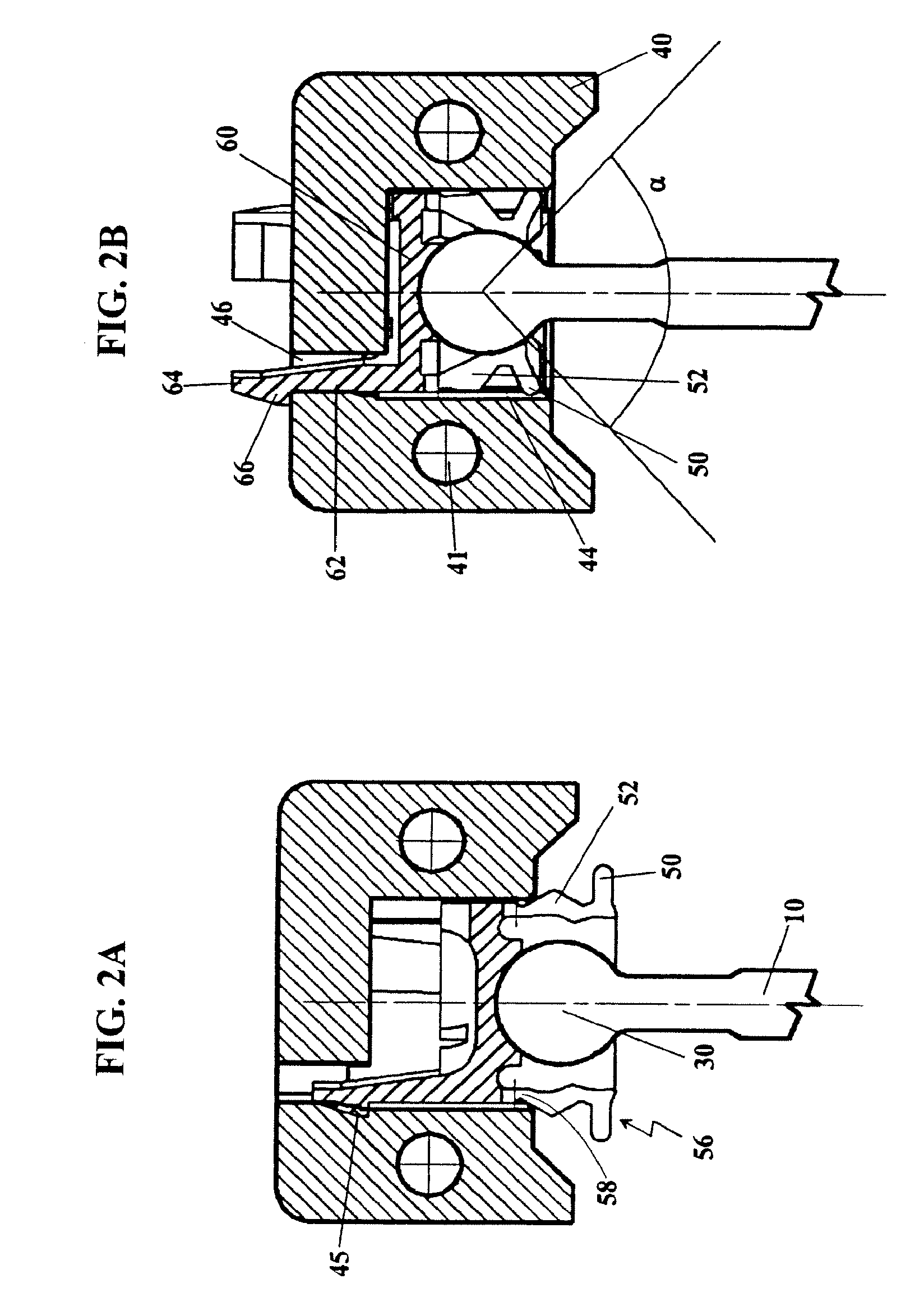Connecting element
a technology of connecting elements and connecting elements, applied in the direction of couplings, mechanical control devices, controlling members, etc., can solve the problems of unsuitability of the construction of the known connecting elements for mechanical loads acting in the assembly direction, sled deformation under the influence of mechanical loading, and construction complexity. achieve the effect of latching
- Summary
- Abstract
- Description
- Claims
- Application Information
AI Technical Summary
Benefits of technology
Problems solved by technology
Method used
Image
Examples
Embodiment Construction
[0039]Referring to FIG. 1, the connecting element 40, 60 according to the invention for connecting a first part 10 (preferably a brake or a clutch linkage) with a second part 20 (preferably a pedal) comprises connecting means 40 and a sled 60 arranged in said connecting means 40. Said sled 60 serves for receiving a fastening end 30 of said first part 10 to be subsequently latched in said connecting means 40.
[0040]Said connecting means 40 is preferably according to the invention made of one piece and is formed by a housing 40 which is connected to said second part 20 or which is integrated therein. It is possible according to the first embodiment of the present invention to configure said connecting means 40 in such a way that it can latchably receive said sled 60.
[0041]Preferably according to the invention, said sled 60 comprises a hollow cylindrical shape having two opposed ends. The one end of said sled 60 serves for receiving and mounting said fastening end 30. The other end serv...
PUM
 Login to View More
Login to View More Abstract
Description
Claims
Application Information
 Login to View More
Login to View More - R&D
- Intellectual Property
- Life Sciences
- Materials
- Tech Scout
- Unparalleled Data Quality
- Higher Quality Content
- 60% Fewer Hallucinations
Browse by: Latest US Patents, China's latest patents, Technical Efficacy Thesaurus, Application Domain, Technology Topic, Popular Technical Reports.
© 2025 PatSnap. All rights reserved.Legal|Privacy policy|Modern Slavery Act Transparency Statement|Sitemap|About US| Contact US: help@patsnap.com



